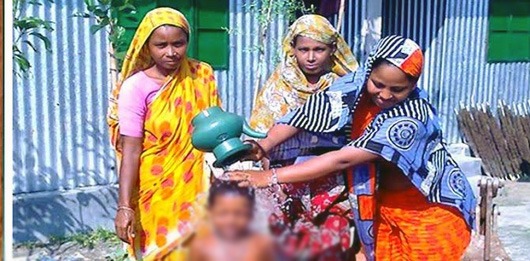Smart farming to help farmers
- Update Time : Thursday, May 29, 2025

—SYED FATTAHUL ALIM—
During its emergence as an independent nation more than half a century back, agriculture was the mainstay of the economy with 85 per cent of the population dependent on it. And agriculture’s share of the GDP was 80 per cent. With increase in productivity through irrigation, introduction of high yielding varieties of crops including intermediate crops, better inputs and mechanisation, employment in the sector has gradually declined and now 45 per cent of the population still depends on agriculture for work. With simultaneous developments in the industrial and the service sectors, agriculture’s contribution to GDP has come down to around 11 per cent, according to official statistics. Actually, due to increased productivity, agriculture’s share of the GDP should be higher and, unofficially, it is believed that it is around 17-18 per cent.
Fragmentation of land due to inheritance and ever-shrinking area of arable land thanks to urbanisation, now per capita land available is around 0.67 acres. This is too small for commercial agriculture (which requires at least 300 to 500acres) to expand. So, self-sufficiency in food will be confined to mere political slogans, while food security remaining an unresolved issue. So to make the most of whatever we have, optimal use of technology and improved management techniques can still play their roles. Agricultural startups (agri-tech startups) are emerging globally to meet growing demand for food. Bangladesh is no exception. Bangladeshi agri-tech startups are offering financial solutions to farmers, helping with marketing linkages as well as providing information and technology services. However, to enable farmers to utllise the agri-tech services, there should be a government programme to increase digital literacy among farmers.
At the same time, cheap credit should be available among small and medium scale farmers, so they might use the services being provided by the startups. Similarly, for the agri-tech startups to be able to expand and widen their services, the government would also be required to play its facilitating role through extending policy and other types of support to them. It is worthwhile to note here that with the advancement of technologies such as AI and IoT (Internet of Things-physical objects embedded with software, sensors and other technologies so they might connect and exchange data with each other over the internet) and big data analytics to influence future agticultural practices everywhere sooner or later, a wave of new opportunities for the startups are being created. The emerging trends and the promises the technologies offer include, for instance, precision agriculture, AI-driven crop management, IoT integration, robotics and automation, bloc kchain for traceability and transparency, and lastly, sustainability and climate resilience. Together these trends make up what is known as smart farming.
The first-noted precision agriculture is about the use of data to leverage farming techniques. This helps the farmer to assess production factors like soil, water and crop health. Making use of satellite imaging, GPS and sensory technology, the farmer can apply water, fertilisers and pesticides correctly enhancing productivity and minimizing wastage. In traditional farming, the same treatment is applied to the entire field. But in precision agriculture, inputs are tailored to real-time data helping farmers to monitor soil health, know about changing weather patterns and decide on when to go for planting or harvesting. As noted in the foregoing, key technologies used in precision farming include GPS (Global Positioning System) and GIS (Geographical Information System).
These technologies help farmers to create detailed maps of their fields so they can identify variations in soil fertility, moisture levels and crop growth. IoT sensors collect data on soil moisture, temperature and plant health, while drones take real-time images of pest attack and nutrient deficiencies, etc. Automation driven by AI, on the other hand, helps tractors, seeders and harvesters cut labour costs and ensure precise application of inputs. Variable Rate Technology (VRT) is another aspect of precision agriculture that helps decide the amounts of water, fertilisers and pesticides based on the conditions at different spots of the same field. All the technologies which are part of precision agriculture can help farmers to be economical, precise and less wasteful in applying the inputs. However, agri-tech startups will be there to assist farmers to use the technologies.
—————————————————–


















